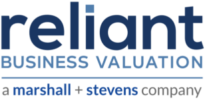06 Aug Enhancing Loan Security: The Case for Equipment Liquidation Values in SBA Lending
Written by: Michael Schykerynec, CMEA & Ross Blanchard, CMEA, ASA
(3 – 5 minute read)
As an SBA lender, understanding the intricacies of your borrowers’ financial landscapes is essential for effective risk management and loan origination. One critical element often overlooked is the liquidation value of equipment. This knowledge can greatly influence your lending decisions and strengthen your portfolio’s resilience.
Equipment liquidation values represent the estimated resale value of machinery and tools in the event of a business winding down. By assessing these values during the loan origination process, lenders can better gauge the quality of collateral provided. Unlike fair market value, which reflects the price that equipment would fetch in an open and competitive market, liquidation values account for a more expedited sale, often at lower prices. This is particularly crucial in industries where equipment depreciation occurs rapidly, such as restaurant and medical equipment, impacting potential recoveries in case of default.
Defining Liquidation Values
There are two main types of liquidation values: orderly liquidation value and forced liquidation value.
-
Orderly Liquidation Value (OLV): This is the estimated price that an asset would fetch if it were sold in a structured manner over a reasonable period of time, typically somewhere between 30 and 120 days, allowing for adequate marketing and attracting multiple potential buyers. OLV typically results in higher recoveries compared to a forced sale.
-
Forced Liquidation Value (FLV): This is the estimated price that an asset would fetch if it were sold quickly, usually in a distressed sale scenario such as an auction. These auctions are usually done when equipment needs to be removed in 30 days or less. FLV is generally lower due to the urgency and lack of competitive bidding.
These values are determined by evaluating the type of equipment and current market demand, then estimating the price it would fetch if sold within a reasonable timeframe that allows for proper marketing and negotiations. The appraiser will apply a discount to reflect the urgency and less favorable conditions of the sale, often using comparable auction results to estimate this value.
The Importance of Liquidation Values at Loan Origination
Having liquidation values at the time of loan origination is a best practice for several reasons:
-
Risk Assessment: Having estimated liquidation values helps in assessing the risk associated with the loan. It provides a realistic picture of the collateral’s worth in a worst-case scenario, enabling better risk management.
-
Collateral Quality: Accurate valuation ensures that the collateral is sufficient to cover the loan amount, which is crucial for protecting the lender’s interests.
-
Financial Stability Insight: Liquidation values reflect how well borrowers manage their assets. This can indicate their overall financial stability and operational viability, which are critical factors in determining their ability to repay the loan.
Tying Liquidation Values into SBA Lending
The SBA requires lenders to follow sound risk management practices to ensure loan quality and mitigate potential losses. By incorporating equipment liquidation values into your lending framework, you demonstrate a commitment to these standards while safeguarding your investments and establishing trust with your clients. Businesses with a clear understanding of their equipment values, especially in uncertain economic climates, are often better positioned to navigate challenges, thereby enhancing loan repayment prospects. This proactive stance can foster lasting relationships as well as create a positive reputation for your lending institution.
Recognizing and analyzing equipment liquidation values at loan origination is more than a best practice—it’s a strategic approach to lending that can lead to stronger client relationships and improved financial outcomes. Prioritize this insight in your lending processes and set your clients—and yourself—up for success!


